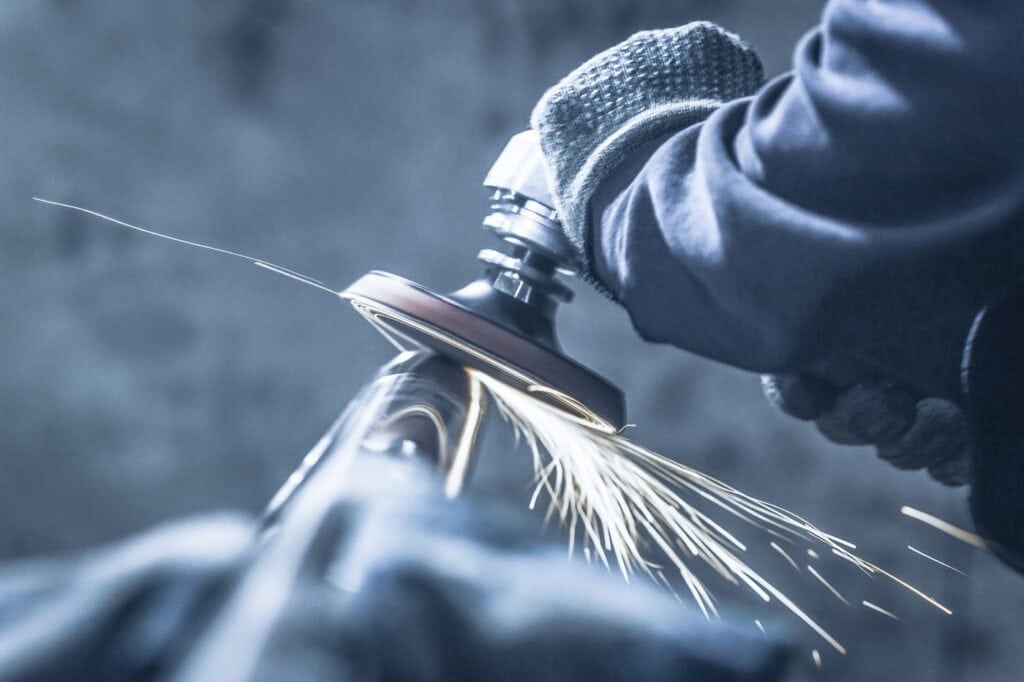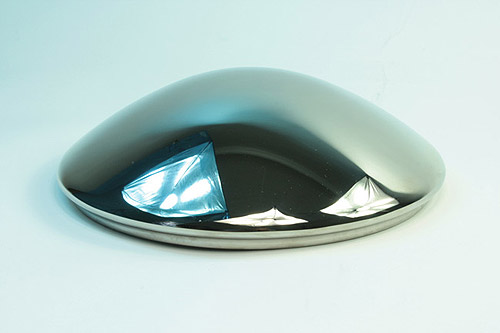Metal polishing is a finishing method that uses an abrasive material to smooth surfaces. When polished, the surfaces of metallic objects are freed of defects and become more reflective and shiny, enhancing their appearance. Metal polishing can be complemented by buffing, a less harsh method that results in a brighter finish.
Aside from its cosmetic value, metal polishing also serves a practical purpose. Beneath the surface, it removes oxidation from and prevents further corrosion of a metal, significantly prolonging its working life.
Metal Polishing Process
Metal polishing can be performed with several varieties of abrasive. The best abrasive for it largely depends on the condition of the material that will be polished.
If the material is unfinished, polishing will consist of several stages. During the first stage, a rougher abrasive that removes imperfections from the material is used. Finer abrasives that leave the material relatively unmarked are used in subsequent stages.
To achieve a mirror-like finish, polishing and buffing compounds are usually applied with polishing wheels and high-speed polishers. While some polishing materials can be applied as-is, wax, kerosene, and other lubricants can also be used during the process. To achieve an even brighter shine, buffing can be performed with the aid of stationary polishers, die grinders, or specialized automated equipment.
In the case of softer metals like brass, a very fine, copper-plated grit is used to smooth out marks from impurities. An airflow mop is used to buff these metals.
Because of their unique requirements, certain tools such as chisels, hammers, screwdrivers, and wrenches are subjected to a different polishing process. The same is true for knives and cutlery.
Tools initially require roughing using a grinding wheel. The materials are then finished using dry polishing materials. If an extra fine polish is necessary, greasing is also performed on the materials. Similarly, knives and cutlery require fine or blue glazing.
Equipment
Depending on the strength of the metal, different types of abrasives may be used during polishing.
For low-tensile strength metals such as aluminum, brass, and copper, gray silicon carbide abrasives are used. The same type of abrasive is used on gray iron and cemented carbide, among other metals.
For high-tensile strength metals such as alloy and carbon steel as well as iron and nonferrous alloys, white and grey aluminum oxide abrasives are preferred. Ferrous metals such as steel require green chromium oxide abrasives.
Canvas and leather are ideal for polishing wheels, although a wide variety of other materials, including cotton cloth, felt, leather, paper, plastic, sheepskin, rubber, and wool can also be used. Cotton or wool cloth are used for buffing wheels or mops.
Applications
Polishing is a necessary stage in many manufacturing processes. Architectural metal, cookware, kitchenware, metal automobile parts, and handrails are just some of the products that are polished before they reach the market. In other cases, metals can be polished as part of general repairs or restoration.
Polishing and buffing can also contribute to workplace safety. Buffing, for example, helps prevent corrosion in specialty plumbing. When applied to pipes found in dairy and pharmaceutical plants, it also destroys bacteria or mold and prevents corrosion, thus ensuring product safety.
Polishing brings out the shine in metallic surfaces and improves the performance of many essential products. At China Exotic Alloy Screws Inc., we’re proud to offer the finest polishing services for every metal used in modern manufacturing. From aluminum to titanium, we have the expertise needed to polish your metals according to your exact specifications.
If you’d like to learn more about our metal polishing services, visit our website here.


